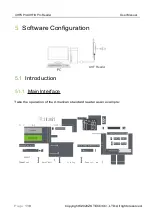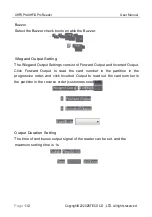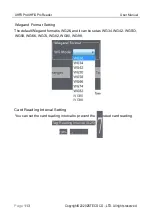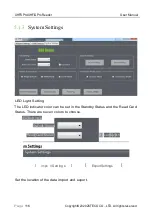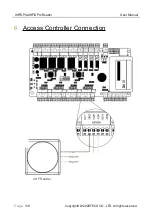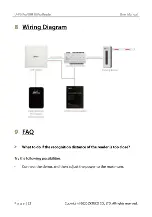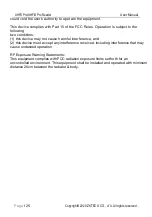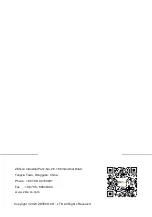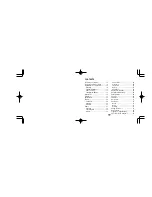
UHFS Pro/UHFlO Pro Reader
User Manual
Copyright©2020 ZKTECO CO.,
LTD.
All rights reserved.
Page
I 24
►
What to do if the barrier doesn't open after reading the card?
Try the following possibilities:
•
Short circuit the NO and COM terminals of the reader, check whether the
switch is open. If it is not open, check whether the connection between
the reader controller port and the barrier port is correct.
•
Check whether the barrier is open when the
UP and GND terminals are
short circuited. If not, the barrier is faulty.
•
Check whether the tag has registered the information on the software
and the data is synchronized to the reader. When swiping the card, pay
attention to whether the controller has the sound of relay jumping, and
whether the software has the normal door opening record display. If so,
check whether the output port of the controller relay signal is connected
to the brake in a wrong manner or connected to another output port.
NOTE: This equipment has been tested and found to comply with the limits for a
Class B digital device, pursuant to part 15 of the FCC Rules. These limits are
designed to provide reasonable protection against harmful interference in a
residential installation. This equipment generates uses and can radiate radio
frequency energy and, if not installed and used in accordance with the instructions,
may cause harmful interference to radio communications. However, there is no
guarantee that interference will not occur in a particular installation. If this
equipment does cause harmful interference to radio or television reception, which
can be determined by turning the equipment off and on, the user is encouraged to
try to correct the interference by one or more of the following measures:
- Reorient or relocate the receiving antenna.
- Increase the separation between the equipment and receiver.
-Connect the equipment into an outlet on a circuit different from that to which the
receiver is connected.
-Consult the dealer or an experienced radio/TV technician for help
Changes or modifications not expressly approved by the party responsible for
compliance

